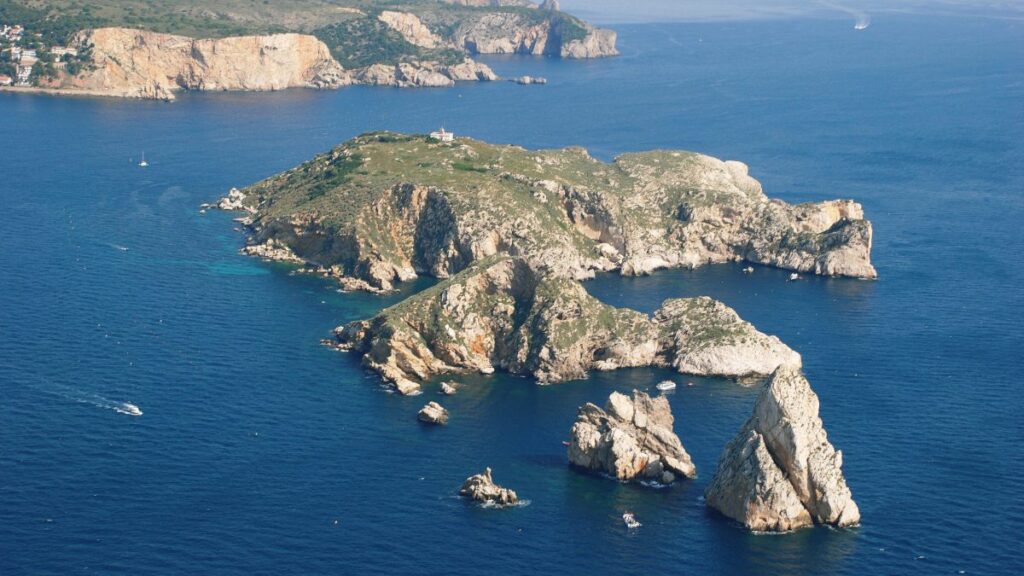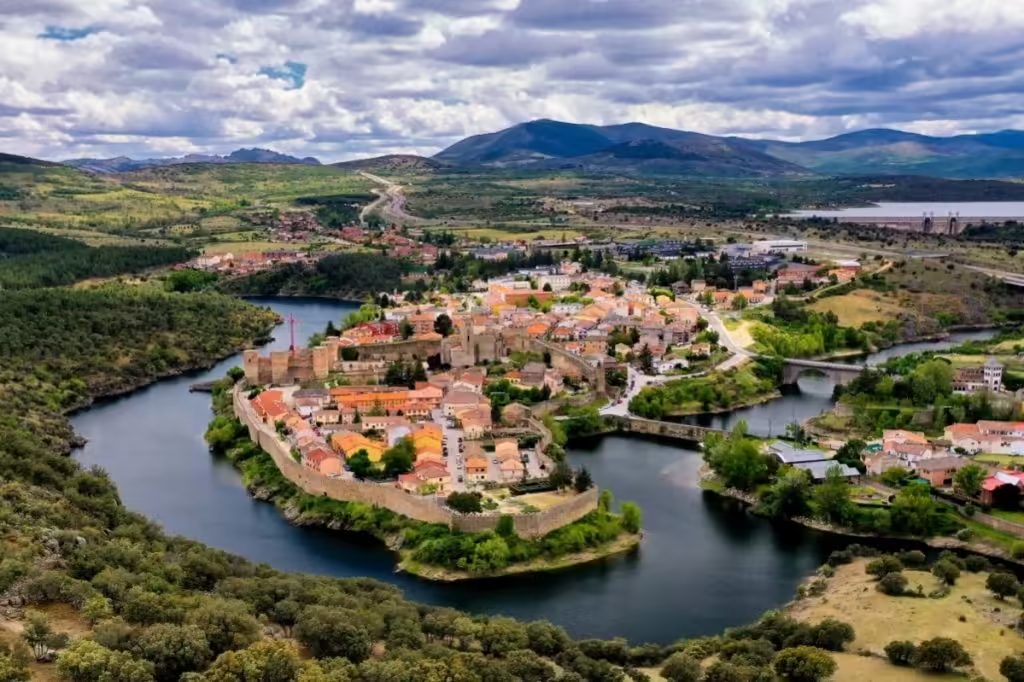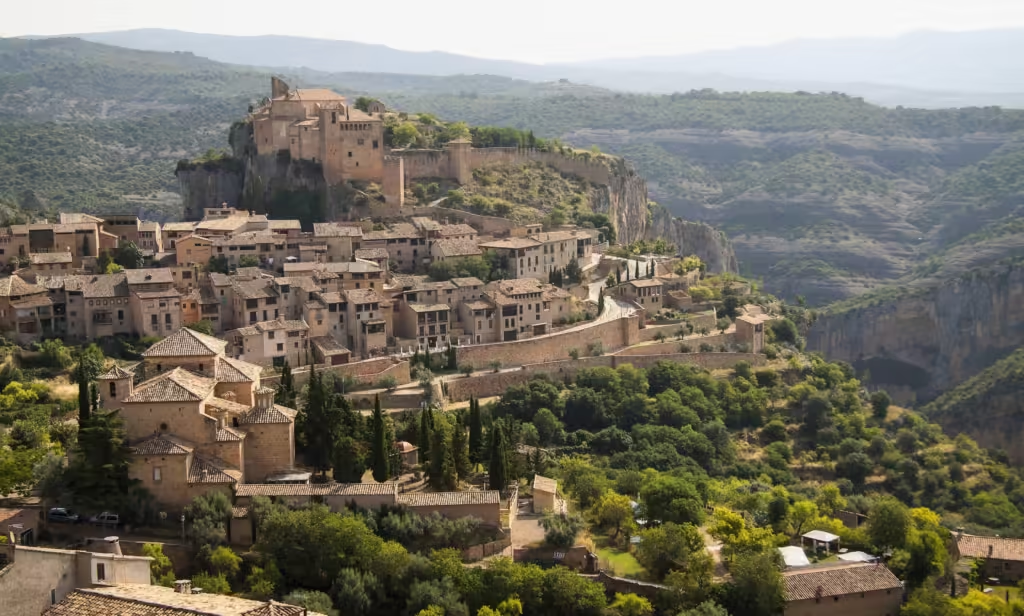The Medes Islands form a small but captivating archipelago off the coast of l’Estartit in Catalonia, Spain. These seven islets lie in the heart of the Costa Brava, within the Montgrí, Medes Islands, and Baix Ter Natural Park. Known for pristine waters, abundant sea life, and diverse marine flora, this protected reserve draws nature enthusiasts year-round. Keep reading to learn everything you need to know about exploring this unique destination, including when to visit, what to do, and how to make the most of your time there.

Introduction to the Medes Islands Marine Reserve
The Medes Islands Marine Reserve is one of the most celebrated ecosystems in the Mediterranean Sea. It offers a protected environment where marine plants and animals thrive. Conservation efforts began in the 1980s, transforming the area into a top European diving hot spot. Today, the region teems with lush underwater forests, colorful corals, and schools of fish.
The underwater landscape of the Medes Islands amazes visitors. You can see groupers, starfish, sea bass, and barracudas swimming through the crystal-clear waters. Sponges and sea fans cling to rocky walls. In deeper spots, corals create vibrant underwater gardens. The government has implemented strict regulations, ensuring minimal human impact. As a result, visitors can now explore a well-preserved marine treasure.
Where Are the Medes Islands Located?
The Medes Islands stand roughly one kilometer off the coast of l’Estartit in the province of Girona, part of the northeastern region of Catalonia. They are nestled on the Costa Brava, famous for its rugged coastline and picturesque beaches. The main port for reaching the islands is l’Estartit, a small town with a long maritime history.
L’Estartit is about 40 kilometers east of Girona and around 140 kilometers northeast of Barcelona. Direct public transportation to l’Estartit from Barcelona is not always available, so many travelers either rent a car or take a train or bus to Girona first. From Girona, you can catch a bus to l’Estartit. The scenic route showcases Catalonia’s diverse landscape, including rolling hills and farmlands.
Highlights of the Medes Islands
Marine Biodiversity
The islands offer a haven for biodiversity. Divers and snorkelers encounter rays, sea turtles, octopuses, and numerous fish species in these protected waters.Crystal-Clear Visibility
Water clarity around the Medes Islands is excellent, which provides great conditions for underwater photography. Visibility can sometimes exceed 20 meters, allowing divers to witness breathtaking marine life in vivid detail.Conservation Success Story
Conservation efforts have helped restore the marine population. Fishing restrictions in the area have allowed natural ecosystems to flourish. This stands as a shining example of how effective protections can restore vulnerable habitats.Rich Sea-Floor Topography
Underwater caves, tunnels, and reefs give the Medes Islands a fascinating topography. Divers enjoy exploring hidden corridors and arches adorned with sponges and coral. Each site has its own distinct character, ensuring a fresh adventure every time.Varied Activities
You don’t need to be a diver to appreciate the Medes Islands. Boat tours, glass-bottom boat excursions, kayaking, and paddleboarding are popular ways to explore above water. Nature lovers can also spot seabirds nesting on the cliffs.
Best Time to Visit the Medes Islands
The best time to visit the Medes Islands typically spans from late spring to early autumn. Warm sea temperatures from May to September make snorkeling and scuba diving more enjoyable. During these months, water conditions are calmer, and the chance of rainfall is lower. In peak summer, expect more crowds. If you prefer a tranquil holiday, consider visiting in May, June, or September when visitor numbers dip.
Even in winter, the climate in l’Estartit remains relatively mild. However, diving becomes more challenging due to cooler water temperatures and increased winds. Many local businesses reduce opening hours during the off-season. For the full range of recreational activities, aim for the warmer months.
How to Reach the Medes Islands
By Air
The closest major airport is Girona-Costa Brava Airport, located about 50 kilometers from l’Estartit. Alternatively, fly into Barcelona–El Prat Airport, which lies around 150 kilometers away. From both airports, renting a car provides the most direct route to l’Estartit.By Public Transport
Train and bus connections make the journey possible, though not always direct. You can take a train to Girona, then catch a bus to l’Estartit. Consult local schedules, as bus frequency may be limited outside summer months.By Car
Driving offers flexibility and convenient access to scenic viewpoints. From Barcelona, follow the AP-7 highway to Girona. Then, take exit 6 toward l’Estartit. Roads along the Costa Brava can be winding, but the views are breathtaking.
Once in l’Estartit, you can join a guided boat excursion to the Medes Islands. Several local operators provide daily trips. Some tours cater to casual sightseers, while others focus on snorkeling or scuba diving.
Things to Do on the Medes Islands
1. Scuba Diving in Protected Waters
The Medes Islands rank high on the list of Europe’s best dive sites. Clear waters and abundant marine life await certified scuba divers. Dive centers in l’Estartit offer gear rentals, guided tours, and training programs for both beginners and experienced divers. Diving companies follow strict safety standards, so you can feel comfortable in their hands.
Popular dive sites include:
Túnel de la Vaca: Known for an underwater tunnel that divers can pass through.
La Cova del Dofí: Features a cave system that houses many fish species.
Pota del Llop: A reef zone where groupers often congregate.
2. Snorkeling Adventures
If diving feels too intense, snorkeling is a fantastic alternative. Shallow reefs close to the islets let you encounter fish and coral formations without going deep. Most boat tours include the option to snorkel. Masks, snorkels, and fins are typically provided, although bringing your own gear can ensure a comfortable fit.
3. Glass-Bottom Boat Tours
A glass-bottom boat tour offers a glimpse of marine life without getting wet. Many families choose these tours because they’re suitable for children and non-swimmers. Operators often explain the local environment during the trip. This educational angle sheds light on why conservation is vital for the Costa Brava region.
4. Kayaking and Paddleboarding
For a more active adventure, rent a kayak or paddleboard. Paddling around the coastline lets you admire dramatic cliffs and hidden coves. Some tours guide you to secluded beaches on the mainland, where you can rest and take in the view. Always check weather and wind forecasts before setting off, as the sea can become choppy.
5. Hiking in the Montgrí Massif
After exploring the islands, consider a trek in the nearby Montgrí Massif. The trails deliver panoramic views of the coast and the Medes archipelago. This region also teems with wildlife, including seabirds, eagles, and small mammals. Wear proper hiking shoes and bring sufficient water, especially during hot summer days.
6. Exploring L’Estartit
L’Estartit itself deserves your attention. Stroll along its port to observe fishing boats and yachts. Savor local cuisine at a waterfront restaurant. Traditional Catalan dishes, like suquet de peix (fish stew), highlight the day’s fresh catch. You can also explore local shops for souvenirs. The town’s laid-back vibe adds to the charm of your Medes Islands excursion.
.
Accommodation and Dining Options
Hotels and Resorts
L’Estartit and its surrounding area offer numerous accommodation choices, ranging from budget hotels to luxury resorts. Many properties boast sea views and easy access to the beach. It’s wise to reserve rooms in advance during peak season, especially if you plan to dive or snorkel.
Holiday Apartments
Vacation rentals and apartments cater to families and groups who prefer self-catering. Staying in an apartment also lets you explore local markets. Fresh produce and seafood are abundant. You can prepare meals at your own pace.
Camping
Several campsites dot the Costa Brava. They offer both tent pitches and bungalows. Camping brings you closer to nature and helps you soak up the region’s scenic beauty. These sites often include a pool, children’s playground, and on-site grocery store.
Dining
Catalan cuisine features bold flavors and fresh ingredients. Seafood forms the star of many local dishes, from grilled fish to paella. Don’t forget to sample tapas at local bars. Patates braves, olives, and Iberian ham are popular choices. Pair your meal with a glass of local white wine or cava for a complete Mediterranean experience.
Marine Biology and Conservation
The Medes Islands’ success in marine conservation has become a model for other Mediterranean regions. Strict fishing regulations and limited access to certain zones protect habitats. Over the past few decades, the fish population has recovered. Healthy kelp forests and reefs now shelter a wide array of marine species.
Diving centers and local nonprofits often promote responsible tourism. They encourage divers to observe without touching or disturbing wildlife. Maintaining proper buoyancy and not leaving trash behind are essential practices. Volunteer programs invite visitors to support cleanup events and monitoring projects. By doing so, tourists can contribute to preserving the beauty of this marine sanctuary.
Historical Insights
The Medes Islands were once used as a base for pirates in centuries past. Early inhabitants recognized the strategic advantage of these isolated islets. Old fortifications and remnants of buildings offer a glimpse into the islands’ past. Although they are uninhabited now, the rich maritime history still fascinates curious travelers.
L’Estartit itself was a modest fishing village before tourism took hold. Over time, it has grown into a family-friendly destination with modern facilities. Still, you can find vestiges of its traditional roots. Fishing boats remain active in the harbor, and local festivals honor maritime traditions. This blend of old and new adds depth to your Costa Brava journey.
Travel Tips and Recommendations
Book in Advance
Plan your dive or snorkeling excursions ahead of time. Popular centers fill up quickly in peak season.Check Weather Conditions
The sea can be unpredictable. Stay updated on marine forecasts to ensure safe boat trips or water sports activities.Respect Local Regulations
Support conservation by adhering to rules. Avoid feeding fish or collecting shells. Dispose of waste responsibly.Pack Light
If you plan on boating, keep your belongings to a minimum. Bring water, sunscreen, a hat, and a small waterproof bag for electronics.Consider Travel Insurance
Water sports involve a level of risk. Make sure your insurance covers scuba diving and other water activities if you plan to try them.Learn Basic Catalan or Spanish
Locals appreciate a friendly greeting in their language. Common phrases can help you navigate restaurants, shops, and directions with ease.
Medes Islands FAQs
1. Do I need a special permit to visit the Medes Islands?
You do not need a separate permit for a casual visit. Most travelers join organized tours. However, diving and fishing face strict regulations. Ensure you comply with local guidelines when booking activities.
2. Is there an entrance fee for the marine reserve?
There is no standard entrance fee for the reserve itself. Boat operators and dive centers set their own prices for excursions and rentals.
3. Can I land on the Medes Islands?
Most of the islets are off-limits for landing without a special permit. They serve as protected spaces for seabird nesting and natural regeneration. Boat tours typically circle the islands or provide snorkeling and diving stops nearby.
4. Is it safe to dive or snorkel for beginners?
Yes, several diving schools cater to beginners. They offer introductory courses and shallow-water dives. Snorkeling is also quite accessible, especially with a guide. Ensure you choose a reputable operator and follow safety instructions.
5. What should I pack for a day trip?
Pack swimwear, sunscreen, a hat, and comfortable sandals or water shoes. Bring a towel, a reusable water bottle, and a light snack or lunch, as boat trips may last a few hours.
6. Are there any family-friendly activities near the Medes Islands?
Absolutely. Besides the boat tours, you can enjoy the nearby beaches, visit local nature parks, or go cycling along coastal paths. L’Estartit also features family-oriented entertainment, such as mini-golf and playgrounds.
7. Which language is primarily spoken in the region?
Residents speak both Catalan and Spanish. English is commonly spoken in tourist areas, but learning a few Catalan or Spanish phrases can enhance your experience.
Conclusion
A trip to the Medes Islands reveals the majestic wonders of the Mediterranean. This marine reserve brims with colorful reefs, thriving fish populations, and underwater landscapes that captivate divers and snorkelers alike. Even if you prefer to stay above water, scenic boat rides, glass-bottom tours, and coastline excursions let you witness the region’s natural charm. Explore l’Estartit for delicious seafood, local culture, and welcoming accommodations.
Responsible tourism sustains this remarkable ecosystem for future generations. Respect the environment, follow regulations, and book excursions with reputable operators. Whether you’re a nature lover, a seasoned diver, or a curious traveler, the Medes Islands promise memories that last a lifetime. Plan your journey carefully, pack your sense of adventure, and savor every moment in this underwater paradise on Spain’s stunning Costa Brava.

